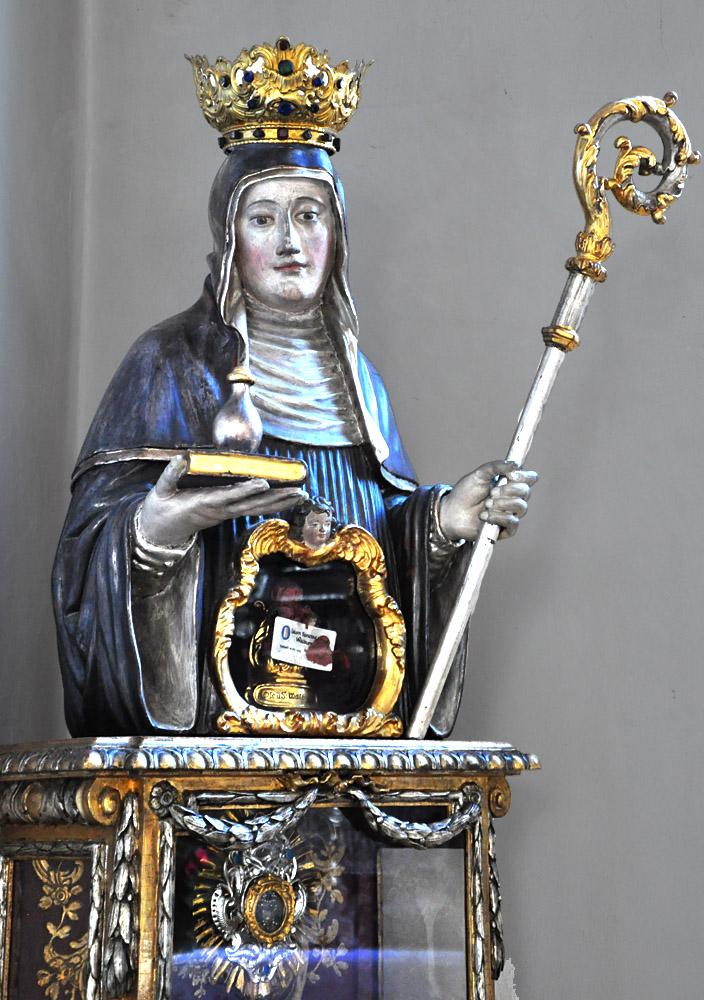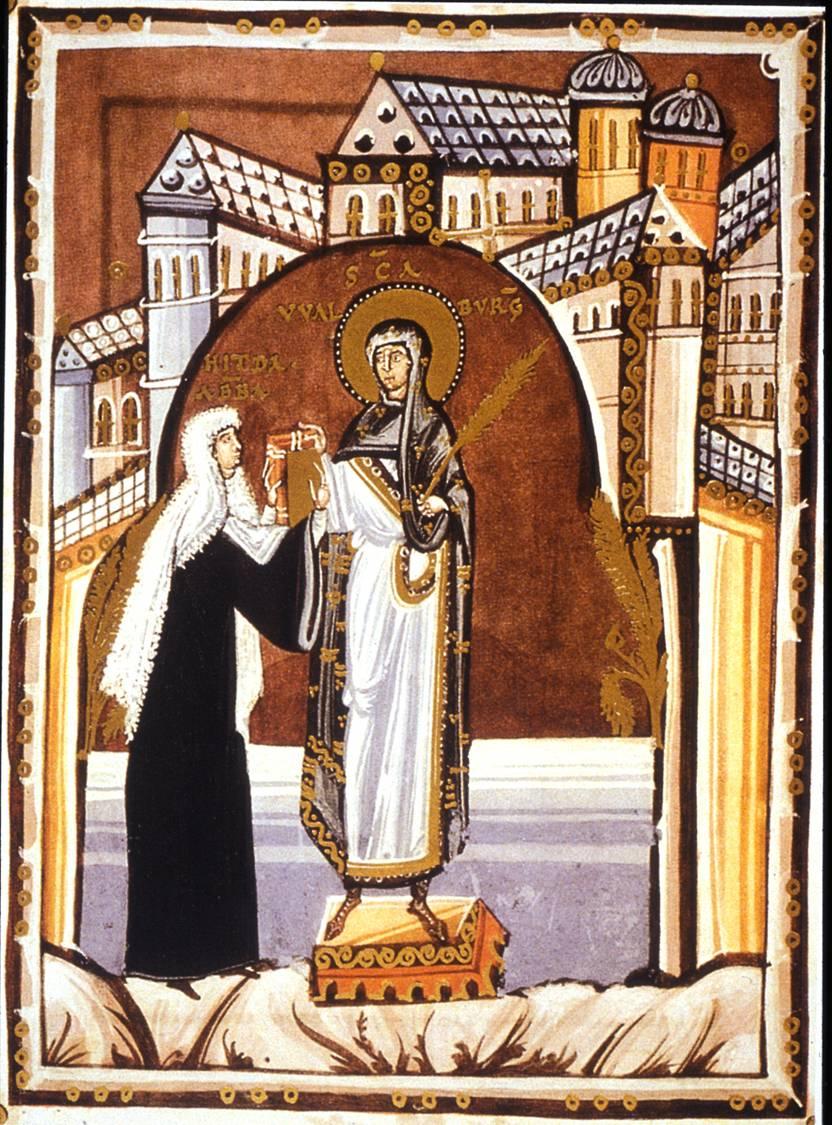The flask or cruet is often placed atop the book. It refers to a remarkable phenomenon at Walburga's tomb in Eichstätt. According to an account by the Bishop of Eichstätt in the early 14th century, a miraculous oil flowed from her body that cured the illnesses of countless pilgrims.1 The more sober-sided Catholic Encyclopedia of 1917 says that the oil has flowed "from that day to this," that it is "probably due to natural causes," and that "the fact that it came in contact with the relics of the saint justifies the practice of using it as a remedy."2
The book is a common attribute for abbesses, but in Walburga's case it may have the additional function of referring to her erudition. Butler (315) says she was "said to have studied and practiced medicine," although I did not find any such claim in her hagiographies. These are replete with stories of cures she effected by prayer rather than medical intervention. She did write two books on the life of her brother, St. Willibald, and in one image, a 12th-century German antependium, a hanging for the front of an altar she is actually reading the book in her hand and is about to turn the page.3
In the earliest known image of Walburga (second picture at right) there is no book or flask and her attribute is a sheaf of wheat. This association with corn Not the American term for maize but the British word for grains in general arises from the coincidence that the eve of one of her feast days, May 1, was once the occasion for pagan celebrations of the coming of spring and the emergence of corn.4 These rites are referred to in Goethe's Faust, where the witches celebrate the night before May 1 as Walpurgisnacht, "Walburga's night":
Now to the Brocken the witches ride;
The stubble is gold and the corn is green.
(I, xxi)
As late as the 14th century, a window in Regensburg Cathedral has a panel in which St. Walburga holds a sheaf of green wheat instead of the usual book, flask, and crozier.
There are few narrative images of Walburga. Perhaps the most notable is the Rubens painting of the saint praying during a storm at sea. According to Philip of Eichstätt's 14th-century vita the devil raised a violent storm in the English Channel as Walburga and her brothers were starting on a pilgrimage. She prostrated herself and prayed for divine assistance, and immediately the storm subsided. (However, an 8th-century work by an associate of Walburga's brother says the ship was "happily favoured by winds" all the way to Rouen.5)
Prepared in 2018 by Richard Stracke, Emeritus Professor of English, Augusta University.

An 18th-century reliquary bust of St. Walburga . (See the description page.)

St. Walburga receives an evangelary from Abbess Hitda of Heidenhamm. (See the description page.)
DATES
- Born in 710.
- February 25: Anniversary of St. Walburga's death, in 777 or 779. Now her primary feast day.
- May 1: Anniversary of her canonization in 870. Celebrated as her feast day in many places during the Middle Ages.
NAMES
- Also known as Walpurga or Walpurgis
BIOGRAPHY
- Butler, I, 415-16
- Acta Sanctorum, February vol. 3, 511-572.
- A few mentions of Walburga are in the 8th-century biography of her brothers, the Vitae Willibaldi et Wynnebaldi.
NOTES
1 Acta Sanctorum, February vol. 3, 562. According to Butler (I, 415) the oil has flowed "from very early times."
2 Catholic Encyclopedia, s.v. "St. Walburga" and "Oil of Saints."
3 Originally from St. Walpurgis Church in Soest, Germany, the antependium is now in the Westfälisches Landesmuseum, Münster. At the time of this writing a photograph was available at the Web Gallery of Art. (Enter "Walpurgis" in the search bar.)
4 See Butler, I, 416. May 1 is the anniversary of St. Walburga's canonization and of her translation to Eichstätt.
5 Acta Sanctorum, February vol. 3, 565). "Itinerary," 40.